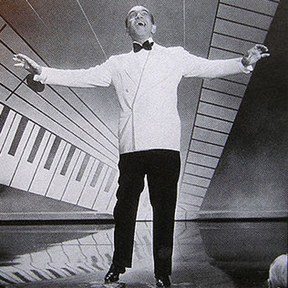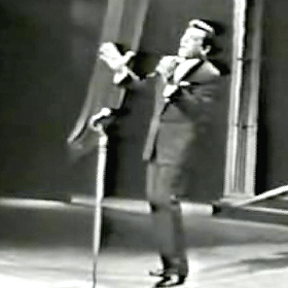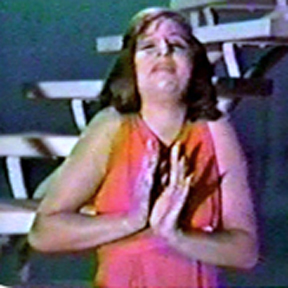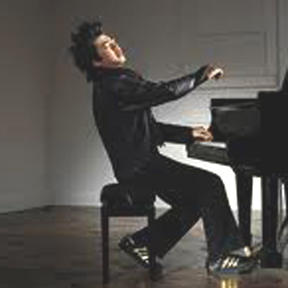Pretend You Are Singing A Painting
I have critiqued this approach before (see Complete In Any Stage) but I wish to return to the subject because I think I have a fresh way of explaining what for me is a terribly key axiom: the measure of a painting – like traveling, perhaps, or friendships, love relationships, love-making itself, dancing, conversation, watching a movie, and so many other activities that are life-giving, is the feeling or set of feelings that we have during the actual activity itself. Robert Henri once encouraged painters to pretend that they were dancing a painting. This is my point exactly, but my not so imaginative wrinkle on this is to encourage painters to pretend that they are singing a painting.
Why singing? Because as we paint, which means as we look and discover, we r e a l i z e feelings and a sense of power, a sense of becoming larger, which is the whole point of it all. Another way of saying it is that we must let the energy of light, the sensuality of the experience, to pass through us, much in the same way that singers allow the sensuality of the experience of sound pass through them. To make the point, I have assembled a few YouTube videos of singers (and one pianist, which is the same thing) that to me, at least, demonstrate two key requirements of painting. First: as it becomes supremely obvious that the sound or the music is passing through these artists, so much so that they seem to be transported to a place where their capacity to touch people is in full throttle, we as painters must also allow the sensations to pass through us so that we, too, have the capacity to touch people. Second: they are wholly vulnerable and open. They allow us to see and feel who they are. We must let it all hang out for the world to see. No small potatoes.
So let’s run through my selections and then I shall conclude with comments as to why a standard production process mitigates against that magical universal communication that art, at least for me, turns on. Push aside any personal like or dislike of the music itself. I have chosen varied selections for a single reason only. All the performers are quite obviously moved; no – more than moved. They are captured and they become vehicles for the transmission of a powerful energy. The sensuality of the music is clearly passing through them. They seem to be caught in a spell. And they don’t seem to care that we are watching.
Al Jolson:
I wanted to start with something mildly amusing. For those of you who do not know, Jolson was dubbed the “world’s greatest entertainer” probably before anyone else. And this song comes from the very first talking movie, made in 1927. Why this clip? Looks to me like he’s truly feeling something and putting himself out there. The clip may drive you bonkers but he certainly lets the world know and feel who he is. Not easy. And it looks he has a few moves that Mr. Jackson might have emulated. (Whatever became of whistling, anyway?)
Mario Lanza:
Truly a tragic figure, Lanza was the highest paid singer in the world at 30 years of age in 1951. This performance takes place in November 1957. He would be dead 2 years later at 38. There are 3 songs here, but the one that I think is most expressive is the aria, E Lucevan le Stelle, that begins at about 4:40 into the clip. This guy was expression times ten. I don’t think he is thinking about results.
Barbara Streisand:
Now in more familiar territory, I would guess, we see a 21-year old Barbara on the Dinah Shore Show in 1963. There are two songs here. I’m more interested in the second one, “Happy Days,” which begins at 4:40. Again, we see an artist who is fearless in her vulnerability. The last note goes badly and as Dinah says, “She is just out of her teens.” Zits and all. But talk about the process creating the work!
Lang Lang:
Lang Lang, for those of you who do not know, is a pianist who even at a young age is causing quite a stir in the world of concert piano. I can think of no artist who better conveys the maxim of letting “the sensation pass through you.” If you search YouTube for Lang Lang, you will find dozens of similar pieces. If Lang Lang appeals to you, watch him play a Hungarian rhapsody should you wish to witness sheer virtuosity. Not surprisingly, a number of critics, just as with Jolson and Lanza, are turned off by his “letting it all hang out” approach to making music. See what you think.
Okay. You get the idea. So where does that leave us as far as painting goes? It reminds us that when we paint for any external end, we subvert the process, the flow. Manet excoriated his students, “No tasks. No tasks!” – which, as Pissarro clarified, meant, do not paint with any “external task” in mind (“I need to finish this before the show,” for example) or as my teacher Bill Schultz would say endlessly, “don’t look for results.” Notice how Lang Lang, when he describes the nocturne he is about to play, talks in terms of anticipating great and wonderful feelings. In effect, he is telling us that this is the point of playing the piece, to experience a set of extraordinary moments. If, on the other hand, we were to paint one part after another as in manufacturing, we are compelled, with the endpoint in mind, to monitor or analyze what we are doing as we do it. Instead of being carried along, we would be correcting, our focus riveted on the result. What a drag.
What the above artists teach us is that we must be moved throughout the entire process; that the measure of the thing, as stated above, are the feelings we have as we journey through the making of the thing. Or to put it as directly as I know how: a painting is not merely the expression of feelings but the realization of feelings – that is, the feelings themselves. Therefore, we must let the process of letting the sensations pass through us create the work. We must not let the endpoint, the external task, deny the unknown and unexpected feelings that propel the thing forward and give the work its impact. In effect, we would be saying, if we were to play the production game, that winning the approval of someone at the end is more important than the thrill of just doing it. I don’t buy it and I wouldn’t give up that thrill for all the tea in China.
Cherish your feelings. Let the sensations pour through you. Pretend you are singing a painting, or whistling.
Just kidding. Forget the whistling.
Address
Via Teresio Olivelli, 20
22021 Bellagio (CO)
Italy
+39 338 975 7135
Open Hours
Tuesday - Saturday: 11:00am – 6:00pm
Sunday - Monday: 1:00pm – 6:00pm





0 Comments